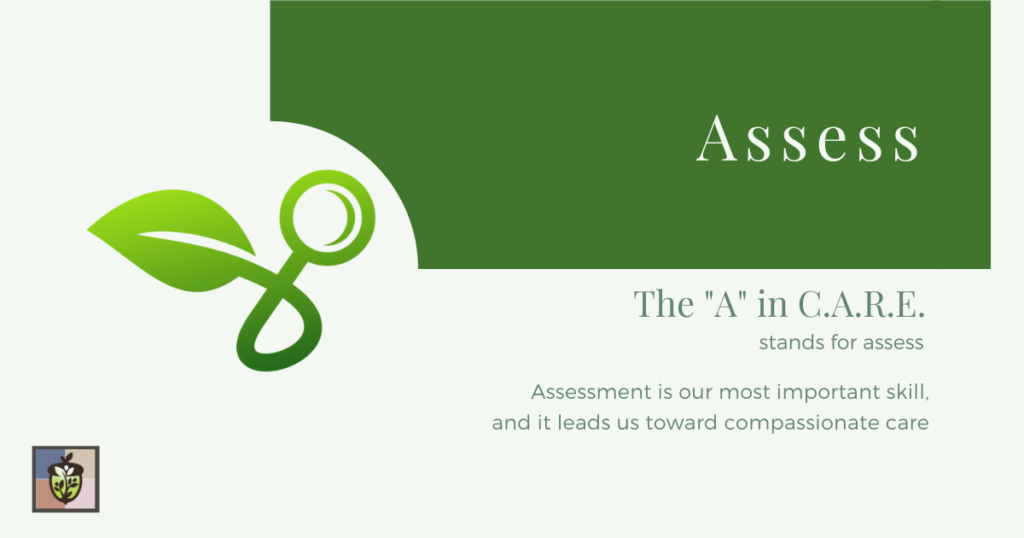The step-by-step process for teaching compassion, and putting compassion at the center of care, is called C.A.R.E. The acronym stands for Connection, Assess, Respond (instead of react), and Evaluate and End. We will be applying each of the steps to ourselves, our staff, and our patients and their families. This is crucial for the method to work.
Assess – this is what nurses do best! Assess the situation objectively, but also asking “Am I sure?” when making assumptions.
“We need to know what the matter is with our patients, but do we always ask what matters to our patients? We need to know what matters to our patients, and our staff, but we also need to know what matters to us. This is the key to being truly compassionate.”
Holistic assessment is an important skill to have, and it sets the stage for having true compassion for others. When we know the basics of structure and function for a patient’s bodily systems, that’s just the first step in understanding how we can best help them. We need to know what matters to the patient as a person. We need to understand what limitations their condition place on them, what support they need, the social determinants of their health, and what their care priorities are. When we let patients know that what matters to them is important to us, too, we build trust.
Knowing what matters to our staff is equally important. We need to assess their motivation, skill level, and potential as key parts of your role as a nurse leader. When we understand what matters to them as individuals, we begin to understand why they react the way they do in certain circumstances. You know they care about their patients and want to do a good job, but sometimes they feel overwhelmed and don’t know where to start.
Working with our peers is part of this step, too. While we don’t assess our peers per se, we do want to understand them better to enhance communication and working relationships. We can ask leading questions in conversation, not to pry into their lives, but to be aware of their family, culture, and beliefs about patient care. If a coworker is boisterous while you are more stoic, it might be tempting to judge them as “unprofessional,” rather than behaving in alignment with their culture and family life. We also want to stand up for a co-worker who is being bullied or treated with incivility. We can do this in a way that does not shame or embarrass either person, but shows that our values are important, and that includes treating everyone with respect and dignity.
But, do you know yourself? You need to start with yourself to be the best leader you can be, and to know that you deliver compassionate care. When you spend time asking yourself what matters, you’ll begin to understand your own priorities and motivations. You’ll want to spend time doing a skills inventory for yourself as well. What are some of the gaps in knowledge that you need to work on? When you spend time assessing yourself, you are exemplifying this important trait.
Some of the ways we can assess ourselves is to develop an emotional inventory – what are the common feelings we have? Being able to name them and realize that they are feelings, not directives to act, is very helpful. Understanding and knowing what our values are makes it easier to live those values with integrity. When people see us living with integrity, they know they’ve found someone they can trust.
We want to help people, and make a difference in their lives. To do that, we need to understand them individuals, treating them with dignity and respect. Over the coming weeks, and in the course “C.A.R.E. About What Matters,” we’ll cover the step-by-step process that will help you do just that.
The step-by-step process I call C.A.R.E.Ô will work with any facility, charting system, or care delivery model because it’s a shift in perspective, not a policy or procedure. I’m looking forward to introducing you to all of the steps. Keep reading, and you’ll see how all of this fits together.
Let me know what you think in the comments below, and click the button to register for the continuing education portal. You can take some free courses to try things out.

